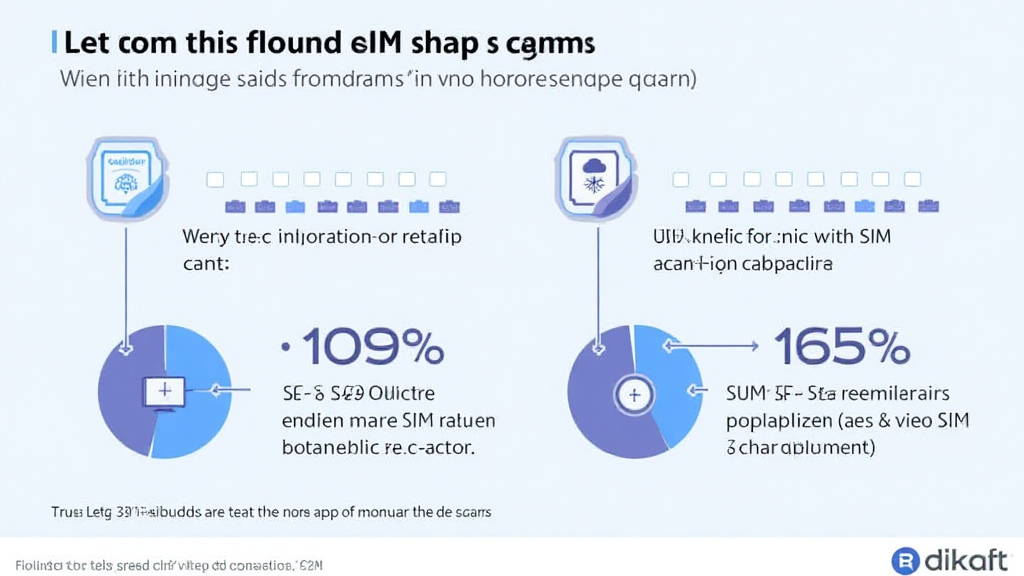Introduction
With over $4.1 billion lost to DeFi hacks in 2024, the world of digital assets has never been more perilous. Among the various threats, SIM swap scams have emerged as a significant risk, particularly in Vietnam. As the country sees a rapid increase in cryptocurrency adoption—more than 40% growth in user engagement year-over-year—it’s vital for investors and traders to understand how these scams operate and the measures they can take to safeguard their assets.
This article aims to provide valuable insights into the operational mechanics of HIBT Vietnam SIM swap scams, their implications, and practical steps for enhancing security. By the end, readers will have a comprehensive understanding of how to protect themselves effectively in this evolving landscape.
What are SIM Swap Scams?
SIM swap scams, or SIM hijacking, occur when a malicious actor tricks a mobile service provider into transferring a victim’s phone number to a SIM card they control. This enables the scammer to intercept calls and messages and, in many cases, gain access to sensitive accounts linked to that phone number, including cryptocurrency wallets.

The consequences can be devastating. Essentially, your phone becomes a point of vulnerability, allowing attackers to bypass two-factor authentication (2FA) measures that many crypto platforms utilize. Much like a bank vault, your crypto assets need a secure entrance—if your phone number is compromised, the entire vault is at risk.
The Rise of SIM Swap Scams in Vietnam
Vietnam’s rapidly evolving digital landscape provides fertile ground for this type of cybercrime. With approximately 16 million cryptocurrency users in the region, the prevalence of SIM swap scams has escalated distinctly. Within the first quarter of 2025, reports indicated a 65% increase in such scams across Asia-Pacific, with Vietnam being a notable contributor.
| Year | Number of SIM Swap Cases | Criminal Prosecutions |
|---|---|---|
| 2022 | 200 | 30 |
| 2023 | 480 | 76 |
| 2024 | 790 | 110 |
This data indicates a growing trend that poses a threat to everyday users and larger investors alike. To combat this trend, a deeper understanding of the mechanics and motivations behind SIM swap scams is essential.
How Do SIM Swap Scams Work?
Understanding the mechanics behind SIM swap scams is crucial for recognizing potential threats. Here’s a breakdown:
- Information Gathering: Attackers gather personal information about their target through social engineering techniques or data breaches.
- Impersonation: With the stolen information, the scammer contacts the victim’s mobile service provider, often pretending to be the victim.
- SIM Card Transfer: The provider is tricked into transferring the victim’s number to a new SIM card controlled by the scammer.
- Account Access: The scammer can now receive calls, texts, and two-factor authentication codes meant for the victim, allowing them to access various accounts.
Real-life scenarios illustrate the dangers effectively. For instance, if a user has a cryptocurrency wallet that uses their phone number for account recovery, the attacker can reset their password and take control of their assets.
Protecting Against SIM Swap Scams
Preventing SIM swap scams requires a multi-faceted approach. Here are effective strategies:
- Secure Personal Information: Limit what personal information you share online, especially on social media.
- Use Strong Passwords: Employ unique, complex passwords for different accounts and consider using a password manager.
- Implement 2FA: Enable two-factor authentication for all accounts. Where possible, use authentication apps instead of SMS for 2FA.
- Contact Your Carrier: Ask your mobile provider for additional security measures, such as account PINs or passwords.
- Regular Monitoring: Keep a close watch on your bank and crypto accounts for any suspicious activities.
Tools such as Ledger Nano X can reduce the risk of hacks by managing your private keys more securely, lowering the chances of unauthorized access.
Recognizing Red Flags
Awareness of warning signs can help in early detection of potential scams. Here are some indicators to watch out for:
- Unusual Account Activity: Look out for unexpected login alerts or notifications.
- Text Messages from Banks: Be wary of messages asking for personal verification details.
- Panic Requests: Scammers often use urgency or fear to push you into quick action; recognize these tactics.
Should you notice any abnormal activities, immediately contact your service provider and crypto exchanges to secure your accounts.
Conclusion
As the digital landscape continues to evolve, understanding threats like HIBT Vietnam SIM swap scams is crucial for all investors and traders. With the growth of users in Vietnam’s cryptocurrency market, the need for vigilance has never been greater. By adopting robust security practices and recognizing the signs of a potential scam, you can safeguard your valuable digital assets and contribute to a safer crypto community.
In summary, remember that while technology empowers us in trading and investing, it also necessitates a proactive approach to security. By staying informed and alert, we can navigate this complex world of digital assets more securely.
For more insights on cryptocurrency safety and news, visit bobscoinsonline.


